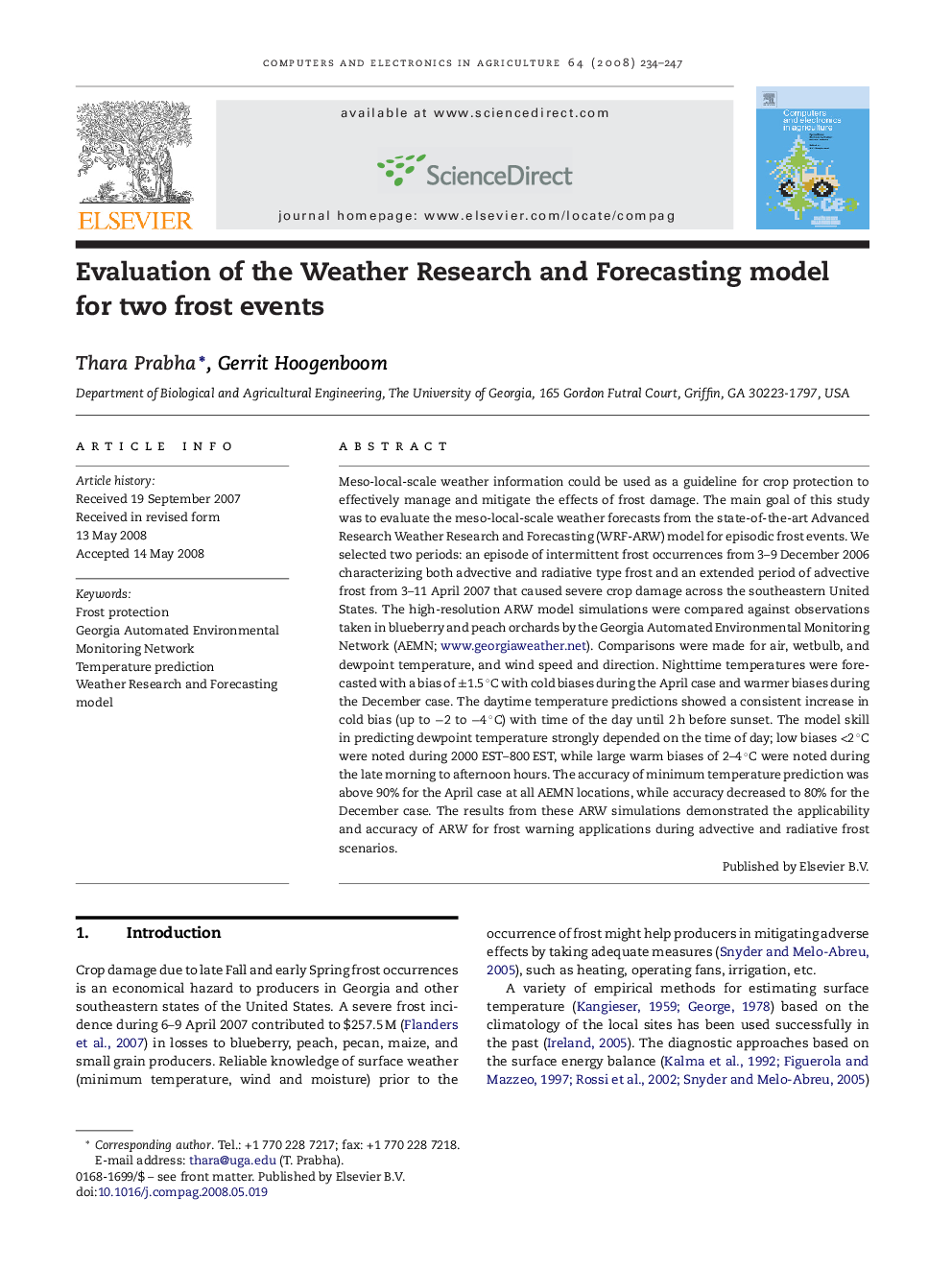| Article ID | Journal | Published Year | Pages | File Type |
|---|---|---|---|---|
| 85333 | Computers and Electronics in Agriculture | 2008 | 14 Pages |
Meso-local-scale weather information could be used as a guideline for crop protection to effectively manage and mitigate the effects of frost damage. The main goal of this study was to evaluate the meso-local-scale weather forecasts from the state-of-the-art Advanced Research Weather Research and Forecasting (WRF-ARW) model for episodic frost events. We selected two periods: an episode of intermittent frost occurrences from 3–9 December 2006 characterizing both advective and radiative type frost and an extended period of advective frost from 3–11 April 2007 that caused severe crop damage across the southeastern United States. The high-resolution ARW model simulations were compared against observations taken in blueberry and peach orchards by the Georgia Automated Environmental Monitoring Network (AEMN; www.georgiaweather.net). Comparisons were made for air, wetbulb, and dewpoint temperature, and wind speed and direction. Nighttime temperatures were forecasted with a bias of ±1.5 °C with cold biases during the April case and warmer biases during the December case. The daytime temperature predictions showed a consistent increase in cold bias (up to −2 to −4 °C) with time of the day until 2 h before sunset. The model skill in predicting dewpoint temperature strongly depended on the time of day; low biases <2 °C were noted during 2000 EST–800 EST, while large warm biases of 2–4 °C were noted during the late morning to afternoon hours. The accuracy of minimum temperature prediction was above 90% for the April case at all AEMN locations, while accuracy decreased to 80% for the December case. The results from these ARW simulations demonstrated the applicability and accuracy of ARW for frost warning applications during advective and radiative frost scenarios.
